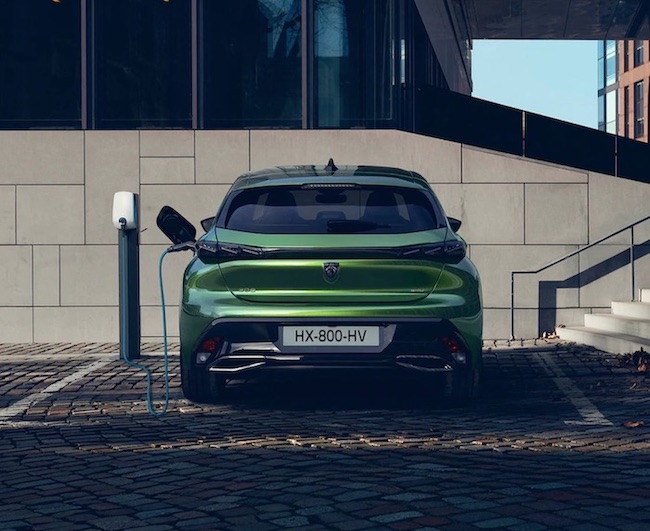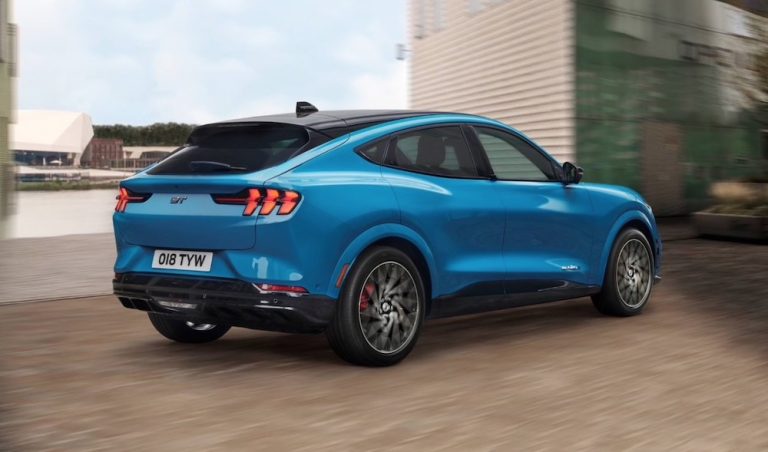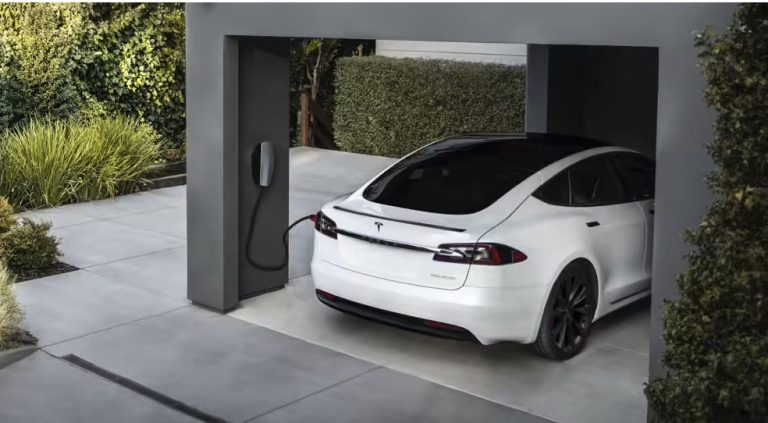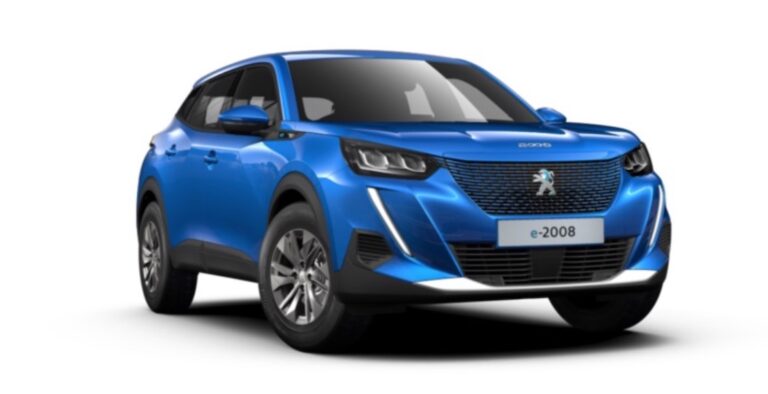Electric Cars: The Basics
For those of you new to zero-emission electric driving, we recommend a read of the following articles:
Sign up to the e-zoomed Electric Living newsletter
The Peugeot 308 Hatchback PHEV
Peugeot is part of the Netherlands based Stellantis N.V., which was formed by the merger of Fiat Chrysler Automobiles (Italian/ American) and Groupe PSA (French). You may not be familiar with these names, but the automotive brands in the portfolio would be well known to most consumers. These include: Maserati, Opel, Vauxhall, Jeep, FIAT, Alfa Romeo etc.
Peugeot was founded in 1810 in Eastern France (Sochaux), and has a rich heritage in motor racing and the broader automotive sector. Peugeot has won many awards for its passenger cars, to include, six European Car of the Year awards. As part of the broader Groupe PSA, Peugeot is very committed to the electric vehicle (EV) sector. The company’s portfolio of battery-electric vehicles (BEVs) i.e. pure electric vehicles, include:
- The all-electric Peugeot e-2008
- The all-electric Peugeot e-208
- Peugeot 308 PHEV
- Peugeot 308 SW PHEV
- Peugeot 408 PHEV
- Peugeot 3008 PHEV
- Peugeot 508 PHEV
- Peugeot 508 SW PHEV
- The all-electric Peugeot e-Rifter
- Peugeot e-Traveller PHEV
The Peugeot 308 hatchback, a popular family car, was first unveiled in 2007. The latest generation (3rd) was unveiled in 2021, to include the plug-in hybrid electric vehicle (PHEV) variant.
If striking looks matter and you are willing to compromise on practicality, then the Peugeot 308 PHEV is worth considering, given its improved environmental credentials (29 g CO2/km) and fuel economy, compared to the conventional combustion engine variant. The combustion engine variant has tailpipe emissions up to 130g CO2/km. The PHEV is manufactured using the EMP2 V3 (Efficient Modular Platform).
The hatchback plug-in electric car is offered in two engine options: Hybrid 225 e-EAT8 (Puretech 150) and Hybrid 180 e-EAT8 (Puretech 180). The first option offers up to 225 hp, while the second offers up to 180 hp. Both variants offer 266 Nm torque. The Hybrid 225 e-EAT8 is just a little quicker in acceleration (0-100 km/h: 7.5 seconds), compared to the 180 e-EAT8 (0-100 km/h: 7.6 seconds). The top speed is 225 km/h (pure electric mode: 130 km/h).
Both variants are front-wheel drive (8-speed automatic), and paired with a 81 kW electric motor. Both EVs also offer the same onboard EV battery size (12.4 kWh). The battery size is fairly typical of PHEV of this type, and so is the claimed WLTP certified emission-free electric range (60 km).
However, expect the real-world electric range to be closer to 52 km. The EV range is impacted by a number of factors, to include, driving profile, speed, load, regenerative braking, road condition, weather, wheel size and a lot more. A 52 km zero-emission electric driving range is sufficient for daily commutes.
The EV can be fully charged via a dedicated EV charging station between 2 hours and 4 hours, depending on the onboard charger in the EV. The manufacturer offers a 3.7 kW onboard charger as standard, but offers the option to upgrade to a 7 kW onboard charger, at an additional cost. The upgraded onboard charger will take 1 hour and 55 minutes to charge the EV from 0% to 100%. The EV does not offer fast DC charging compatibility.
Taking advantage of the EV range will also require inculcating a habit of charging the EV on a regular basis, which again is as easy as charging a smartphone. We at e-zoomed discourage the use of a domestic 3-PIN plug for charging an electric car.
A ‘topping up’ approach to electric car charging will help improve the overall efficiency of the electric vehicle and also improve the long-term maintenance of the onboard EV battery. Peugeot offers a warranty up to 8 years or 160,000 km for the battery (70% of original capacity).
The automotive manufacturer claims a fuel economy up to 1.2 l/100 km for the electric vehicle (EV). Of course the real-world fuel economy will depend on a number of factors, but none as influential as using the e-mode. Bottom-line, to increase the fuel economy of the electric vehicle and lower the driving costs, the PHEV should be driven as much as possible on the pure electric mode. The EV has three driving modes: hybrid, electric and sport. Of course, using the sport mode will reduce the fuel economy of the PHEV.
It is also far cheaper to drive on electric mode, compared to using the combustion engine. Depending on where the EV is charged and the cost of charging, driving an electric car will cost between 5 to 10 cents per km. Of course, driving on e-mode has the added benefit of a smoother and quieter drive.
In terms of practicality, the rear seats are impacted by the exterior styling and the onboard EV battery. Headroom and legroom for rear seat passengers is not as spacious as other PHEVs in its class. The boot size (361 L) is also not as large as other EVs in its segment.
However, the interior quality is high and the manufacturer offers a good level of standard technology and features, to include: driver assist pack, lane keeping assist, speed limit recognition, blind spot detection, driver attention warning, 10″ touchscreen with 3D navigation and more. The PHEV has been awarded a Four-Stars NCAP safety rating.
Bottom-line, electric driving is good for the environment and the wallet!
| PROS | CONS |
|---|---|
| Attractive exterior styling and high quality interior | 7 kW onboard charger not available as standard |
| Decent electric range | Boot space not as large as alternative |
| Cheap to drive on electric mode | Rear seat not spacious |
The Peugeot 308 Hatchback PHEV (credit: Peugeot)
| At A Glance | |
|---|---|
| EV Type: | Plug-In Hybrid Electric Vehicle (PHEV) |
| Vehicle Type: | Hatchback |
| Engine: | Petrol-Electric: Hybrid 180 e-EAT8/ Hybrid 225 e-EAT8 |
| Available In Ireland: | Yes |
| Variants (3 Options) |
|---|
| Peugeot 308 Active (from € 40,785): Hybrid 180 e-EAT8 |
| Peugeot 308 Allure (from € 44,325): Hybrid 180 e-EAT8 |
| Peugeot 308 GT (from € 46,190): Hybrid 180 e-EAT8/ Hybrid 225 e-EAT8 |
| EV Battery & Emissions | |
|---|---|
| EV Battery Type: | Lithium-ion |
| EV Battery Capacity: | Available in one battery size (12.4 kWh) |
| Charging: | DC charging not available. Onboard charger: 3.7 kW standard (0% – 100%: 4 hrs). 7.4 kW AC optional (0% – 100%: 2 hrs) |
| Charge Port: | Type 2 |
| EV Cable Type: | Type 2 |
| Tailpipe Emissions: | 29 – 24 g (CO2/km) |
| Warranty: | 8 years or 160,000 km |
| Average Cost Of Residential Charging | |
|---|---|
| Battery net capacity : 8.8 kWh | € 2.10 |
| Battery net capacity : 11.6 kWh | € 2.78 |
| Battery net capacity : 12.0 kWh | € 2.87 |
| Battery net capacity : 13.10 kWh | € 3.14 |
| Battery net capacity : 14.10 kWh | € 3.37 |
- Note 1: The average cost of residential electricity in Ireland varies depending on the region, supplier and type of energy used. An average for Ireland is 23.97 cents/kWh.
- Note 2: Not all EV manufactures make available the data on net EV battery capacity, and in a number of instances the EV battery capacity advertised, does not state if it is gross or net capacity. In general, usable EV battery capacity is between 85% to 95% of the gross available capacity.
| Charging Times (Overview) | |
|---|---|
| Slow charging AC (3 kW – 3.6 kW): | 6 – 12 hours (dependent on size of EV battery & SOC) |
| Fast charging AC (7 kW – 22 kW): | 3 – 8 hours (dependent on size of EV battery & SoC) |
| Rapid charging AC (43 kW): | 0-80%: 20 mins to 60 mins (dependent on size of EV battery & SoC) |
- Note 1: SoC: state of charge
| Dimensions | |
|---|---|
| Height (mm): | 1441 |
| Width (mm): | 2062 |
| Length (mm): | 4367 |
| Wheelbase (mm): | 2675 |
| Turning Circle (m): | 10.4 |
| Cargo Volume (L): | 361 |
| Hybrid 180 e-EAT8 | |
|---|---|
| EV Battery Capacity: | 12.4 kWh |
| Pure Electric Range (WLTP): | 60 km |
| Electric Energy Consumption (Wh/km): | N/A |
| Fuel Consumption (l/100km): | 1.2 – 1.1 |
| Charging: | DC charging not available. Onboard charger: 3.7 kW standard (0% – 100%: 4 hrs). 7.4 kW AC optional (0% – 100%: 2 hrs) |
| Top Speed: | 225 km/h (electric mode: 130 km/h) |
| 0-100 km/h: | 7.6 seconds |
| Drive: | Front-wheel drive (FWD) |
| Electric Motor (kW): | 81 |
| Max Power (hp): | 180 (combined) |
| Torque (Nm): | 266 (combined) |
| Transmission: | Automatic |
| Seats: | 5 |
| Doors: | 5 |
| Kerb Weight (kg): | 1,603 |
| Colours: | 7 |
| NCAP Safety Rating: | Four-Stars |
| Hybrid 225 e-EAT8 | |
|---|---|
| EV Battery Capacity: | 12.4 kWh |
| Pure Electric Range (WLTP): | 59 km |
| Electric Energy Consumption (Wh/km): | N/A |
| Fuel Consumption (l/100km): | 1.3 – 1.2 |
| Charging: | DC charging not available. Onboard charger: 3.7 kW standard (0% – 100%: 4 hrs). 7.4 kW AC optional (0% – 100%: 2 hrs) |
| Top Speed: | 225 km/h (electric mode: 130 km/h) |
| 0-100 km/h: | 7.5 seconds |
| Drive: | Front-wheel drive (FWD) |
| Electric Motor (kW): | 81 |
| Max Power (hp): | 225 (combined) |
| Torque (Nm): | 266 (combined) |
| Transmission: | Automatic |
| Seats: | 5 |
| Doors: | 5 |
| Kerb Weight (kg): | 1,633 |
| Colours: | 7 |
| NCAP Safety Rating: | Four-Stars |
Electric Vehicles (EVs): Top 5 Jargons
There is no doubt, in that, for those new to electric driving, the terminology can be both daunting and confusing. We have chosen the top 5 jargons to help you get more familiar with electric vehicles (EVs)!
| Top 5 Jargons : Electric Vehicles (EVs) | |
|---|---|
| EV (Electric Vehicle) | An EV is any vehicle that uses ‘electricity’ or an ‘electric motor’ to power the vehicle. The electric motor derives its power from a rechargeable battery or batteries. In general, EVs are less dependent on petrol or diesel as fuel, and in the case of pure electric cars, not dependent at all, on petrol/diesel for propulsion. EVs encompass all types of electric vehicles, to include Battery-Electric Vehicles (BEVs), Plug-in Hybrid Electric Vehicles (PHEVs), Extended Range Electric Vehicles (E-REVs) and Fuel Cell Electric Vehicles (FCEVs). |
| Regenerative Braking | Driving at all times requires braking. However, on more densely populated roads, the frequency and intensity of braking increases, reducing the efficiency of the vehicle. Regenerative braking is the process of capturing energy, otherwise wasted during braking. According to the rules of physics, energy cannot be destroyed, instead it simply transfers from one state to another. The same principle applies to braking. The kinetic energy that propels a car forward is usually displaced or wasted as heat. Regenerative braking captures this kinetic energy, that in turn recharges an onboard EV battery, increasing both efficiency and electric range. Electric cars like Toyota Prius PHEV, Jaguar I-PACE BEV and Tesla Model 3 BEV use regenerative braking to increase efficiency and electric range. |
| Torque | Torque (Nm) is the measure of the force that can cause an object to rotate about an axis. Torque is a key factor in determining acceleration of a vehicle and is defined as the engines rotational speed. Torque is most commonly defined as the force required to twist an object. For example, a wrench being used. The heavier a car, the more important is the role of torque i.e. the vehicle needs more rotational force to help it accelerate faster. |
| WLTP (Worldwide Harmonised Light Vehicle Test Procedure) | In a bid to continue to improve the quality of data released by automotive manufacturers (OEMs), on efficiency, range and CO2 emissions, Europe has introduced the WLTP testing procedure. WLTP is seen as a significant improvement over the New European Driving Cycle (NEDC) testing standard designed in the 1980s. In general, WLTP data is more realistic compared to NEDC! WLTP has been developed with the aim of becoming a global standard, so that cars can be easily compared between regions. However, real world driving data will still differ from WLTP data. As an example, the real world electric range of an electric car can be significantly lower than the stated WLTP range, depending on driving style, driving conditions, weather, onboard services used and more! |
| ULEVs (Ultra-Low Emission Vehicles) | An ultra low emission vehicle is any vehicle that emits less than 75g of CO2/km and is capable of operating with zero-tailpipe emissions for at least 10 miles. In general, ULEVs release emissions that are at least 50% lower than petrol and diesel cars, by using low carbon technologies. ULEVs include all types of electric vehicles: BEVs, PHEVs, E-REVs etc. and are a key solution in improving air quality. There are currently numerous ULEVs available, to include e-cars, e-vans, e-motorcycles, e-mopeds and e-taxis. Examples include: Nissan Leaf, BMW i3, MINI Countryman PHEV and Renault Kangoo ZE. |
While e-zoomed uses reasonable efforts to provide accurate and up-to-date information, some of the information provided is gathered from third parties and has not been independently verified by e-zoomed. While the information from the third party sources is believed to be reliable, no warranty, express or implied, is made by e-zoomed regarding the accuracy, adequacy, completeness, legality, reliability or usefulness of any information. This disclaimer applies to both isolated and aggregate uses of this information.






























